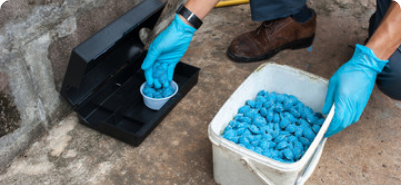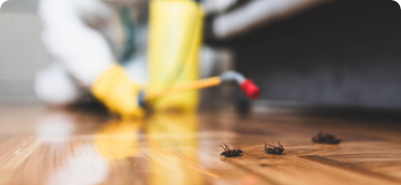Understanding Termite Infestations
What is a Termite Infestation?
A termite infestation occurs when a colony of termites establishes itself within a structure, such as a home or building, and begins to feed on wood and other cellulose-based materials. These infestations can be devastating, leading to significant structural damage and costly repairs. Subterranean termites, in particular, are the most common culprits in Sydney homes. Their underground habits make them especially difficult to detect, often allowing them to cause extensive damage before being discovered.
Termite infestations can occur through various means:
- Direct Contact with Soil: Termites can enter a structure through direct contact with soil, such as through cracks in the foundation or walls.
- Infested Wood: Using infested lumber or firewood can introduce termites into a home.
- Nearby Termite Activity: Proximity to termite activity in neighboring buildings or trees can increase the risk of infestation.
Regular termite inspections are crucial for early detection of termite infestations. Comprehensive termite inspections can identify signs of termite activity, such as mud tubes, damaged wood, and live termites, allowing homeowners to take prompt action before significant damage occurs.
Understanding Termite Barriers
Termites pose a significant threat to homes in Sydney, with the potential to cause extensive damage if left unchecked. A termite barrier is a preventative measure designed to protect properties from these destructive pests. Understanding the types of barriers available and their installation process is crucial for homeowners looking to safeguard their investments. Additionally, termite protection is essential in preventing damage, especially in termite-prone areas like New South Wales, where it is legally required for new houses.
Regular inspections are vital to ensure the effectiveness of any termite barrier. No system, whether a chemical barrier or a reticulation system, guarantees complete protection against termite infestations. Therefore, a termite management system should be used in conjunction with regular inspections to detect early signs of termites and provide effective protection.
What are Termite Barriers?
Termite barriers are physical or chemical barriers that prevent termites from entering a structure. They can be installed during the construction phase of a home or retrofitted into existing buildings. The primary goal of these barriers is to create an effective line of defence against termite infestation. Incorporating termite barriers is a crucial aspect of comprehensive termite pest control strategies, ensuring long-term protection and proactive management of termite infestations.
There are two main types of termite barriers: physical barriers and chemical barriers. Physical barriers include materials like steel mesh or concrete, while chemical barriers involve the application of insecticides in the soil around a property. Each type has its own advantages and considerations, making it essential for homeowners to assess their specific needs. For more information about what it is, read this guide discussing what is a termite barrier treatment.
Why are Termite Barriers Important?
In Australia, termites cause billions of dollars in damage each year. This makes termite barriers not just a precaution, but a necessity for homeowners. A well-installed barrier can significantly reduce the risk of infestation and protect the structural integrity of a home. Without these barriers, homes are at a higher risk of suffering significant damage from a termite attack.
Moreover, many insurance policies do not cover termite damage, meaning that homeowners could face hefty repair bills if an infestation occurs. Investing in a termite barrier is a proactive step that can save money and stress in the long run.
In addition to the financial implications, the emotional toll of dealing with a termite infestation can be substantial. Homeowners often experience anxiety and frustration when faced with the prospect of costly repairs and the disruption of their living environment. By implementing a termite barrier, homeowners can enjoy peace of mind, knowing that they have taken a significant step towards protecting their home and their family. Furthermore, regular inspections and maintenance of these barriers can enhance their effectiveness, ensuring long-term protection against these voracious pests.
It’s also worth noting that the installation of termite barriers can contribute to the overall value of a property. Prospective buyers are often more inclined to invest in homes that have established pest control measures in place, viewing them as a safer and more secure option. Thus, not only do termite barriers serve a practical purpose, but they can also be a strategic investment in the future resale value of a home, making them an essential consideration for any responsible homeowner.
Types of Termite Barriers
Choosing the right type of termite barrier is essential for effective protection. Homeowners should consider their property’s location, construction type, and budget when making this decision. Additionally, selecting the appropriate termite treatment in Sydney is crucial to ensure comprehensive and tailored solutions for termite infestations.
Chemical Barriers
Chemical barriers involve treating the soil around a home with termiticides, which are designed to repel or kill termites. These barriers can be applied during construction or as a preventative measure for existing homes. The effectiveness of chemical barriers depends on the type of chemical used, the application method, and the soil conditions.
Chemical barriers play a crucial role in comprehensive termite management strategies, ensuring early detection and effective control of termite infestations. It is important to note that chemical barriers require periodic re-treatment to maintain their effectiveness. Homeowners should consult with pest control professionals to determine the best options for their specific situation.
Physical Barriers
Physical barriers are made from materials that termites cannot penetrate. These include stainless steel mesh and concrete. Physical barriers are often installed during the construction phase and can be integrated into the building’s design.
Understanding different termite species is crucial when choosing a physical barrier, as each species presents unique challenges that may require specific materials or installation techniques.
One of the significant advantages of physical barriers is their longevity. Unlike chemical treatments, which may need to be reapplied, physical barriers can last for the lifetime of the building if installed correctly. This makes them a cost-effective option for long-term protection.
Termite Baiting Systems
How Termite Baiting Systems Work
Termite baiting systems are an innovative approach to termite control, utilizing bait stations to attract and eliminate termites. These systems consist of a series of bait stations strategically placed around the perimeter of a structure, each containing a toxic substance that is highly attractive to termites.
Here’s how termite baiting systems work:
- Placement of Bait Stations: Bait stations are installed around the perimeter of the structure, typically spaced 10-20 feet apart.
- Attractive Toxic Substance: The bait stations contain a slow-acting poison that termites find irresistible.
- Termite Feeding: Termites discover the bait stations and begin feeding on the toxic substance.
- Colony Elimination: Termites return to their colony and share the toxic substance with other members, eventually killing the queen and the entire colony.
- Regular Monitoring: The bait stations are monitored regularly to ensure termites are actively feeding on the bait.
Termite baiting systems can be highly effective, especially in situations where traditional termite treatments are not feasible. However, they may not be suitable for all types of termite infestations. A comprehensive termite inspection is necessary to determine the best course of treatment for each specific situation.
Installation Process
The installation of termite barriers requires careful planning and execution. Whether opting for a chemical or physical barrier, it is advisable to engage the services of a professional pest control expert to ensure the best results. Local expertise is crucial, especially in pest control Sydney, to address specific regional challenges effectively.
Preparing for Installation
Before installation, a thorough inspection of the property should be conducted. This includes assessing the current state of the building, identifying any existing termite damage, and determining the best barrier type for the specific environment. Homeowners should also ensure that any landscaping or external features do not obstruct the barrier’s effectiveness.
Installation of Chemical Barriers
The installation of a chemical barrier typically involves digging trenches around the perimeter of the home and applying the termiticide to the soil. The depth and width of the trench will depend on the specific product used and the recommendations of the pest control professional.
Once the chemical has been applied, the trenches are backfilled, and the area must be monitored for any signs of termite activity. Regular inspections and re-treatments are essential to maintain the barrier’s effectiveness.
Installation of Physical Barriers
For physical barriers, the installation process varies depending on the type of material used. For example, stainless steel mesh is often installed in the foundation walls and around plumbing penetrations. This requires precise measurements and careful placement to ensure there are no gaps that termites could exploit.
Physical barriers may also involve the use of concrete, which must be poured and cured correctly to create an effective barrier. Homeowners should work closely with their builders or pest control experts to ensure proper installation.
Maintaining Your Termite Barrier
Once a termite barrier is installed, maintenance is crucial to ensure its continued effectiveness. Regular inspections and monitoring can help identify any potential issues before they escalate into serious problems. An annual termite inspection is essential for maintaining the effectiveness of termite barriers, as it allows for the assessment of the bait and the identification of any termite activity.
Regular Termite Inspections
Homeowners should schedule regular inspections with a qualified pest control professional. These inspections can help detect early signs of termite activity or damage, allowing for prompt action to be taken.
During these inspections, the pest control expert will assess the condition of the barrier and recommend any necessary maintenance or re-treatment. This proactive approach can save homeowners significant costs in the long run.
Signs of Termite Damage
Being aware of the signs of termite activity is essential for homeowners. Common indicators include mud tubes, discarded wings, and hollow-sounding wood. If any of these signs are noticed, it is crucial to contact a pest control professional immediately to assess the situation.
Re-treatment and Repairs
For chemical barriers, re-treatment is necessary every few years, depending on the product used and environmental factors. Homeowners should keep records of when treatments were applied and schedule follow-up services as needed.
If damage is detected, repairs should be made promptly to prevent further issues. This may involve replacing damaged wood or reinforcing existing barriers to ensure continued protection.
Termite Damage and Active Termites
What is Termite Damage?
Termite damage refers to the destruction of wood and other cellulose-based materials caused by termite activity. This damage can be extensive, potentially leading to costly repairs and even structural collapse if left unchecked.
Termite damage can manifest in several ways:
- Hollow-Sounding Wood: Termites often hollow out wood from the inside, leaving it weak and vulnerable to collapse.
- Mud Tubes: Termites create mud tubes to travel between their underground colony and the structure they are infesting.
- Discarded Wings: After swarming, termites discard their wings, leaving them behind as a sign of infestation.
- Live Termites: The presence of live termites is a clear indication of an active infestation.
Regular termite inspections are essential for detecting termite damage early, before it becomes severe. A comprehensive termite inspection can help identify signs of termite activity and assess the extent of the damage.
Active termites indicate an ongoing infestation, and it’s crucial to address the issue promptly to prevent further damage. Engaging a termite inspection service can help identify the source of the infestation and recommend the most effective treatment options. Regular termite inspections and prompt action are key to maintaining the integrity of your home and protecting it from these destructive pests.
Choosing the Right Termite Control Professional
Selecting a reputable pest control professional is vital for the successful installation and maintenance of termite barriers. Homeowners should consider several factors when making their choice. It is crucial to select qualified experts in the pest control industry to navigate the complexities of termite management and prevention.
Qualifications and Experience
It is essential to choose a pest control professional who is licensed and has experience in termite barrier installation. Checking for qualifications and industry certifications can provide peace of mind that the work will be carried out to a high standard.
Additionally, seeking recommendations from friends, family, or online reviews can help identify trustworthy professionals in the area.
Service Offerings
Not all pest control companies offer the same services. Homeowners should inquire about the types of termite barriers available, as well as the installation and maintenance processes. A comprehensive service that includes inspections, treatments, and follow-ups is ideal for ensuring long-term protection.
Cost Considerations
While cost should not be the sole factor in choosing a pest control professional, it is important to obtain quotes from multiple companies to ensure a fair price. Homeowners should be wary of unusually low quotes, as these may indicate subpar materials or services.
Investing in a quality termite barrier is an investment in the home’s future, making it essential to choose a professional who will deliver value for money.
Conclusion
Termite barrier installation is a critical step for homeowners in Sydney looking to protect their properties from the threat of termites. By understanding the types of barriers available, the installation process, and the importance of regular maintenance, homeowners can make informed decisions to safeguard their homes.
Engaging a qualified pest control professional ensures that the installation is carried out correctly and that ongoing protection is maintained. With the right measures in place, homeowners can enjoy peace of mind knowing that their properties are protected from these destructive pests.






